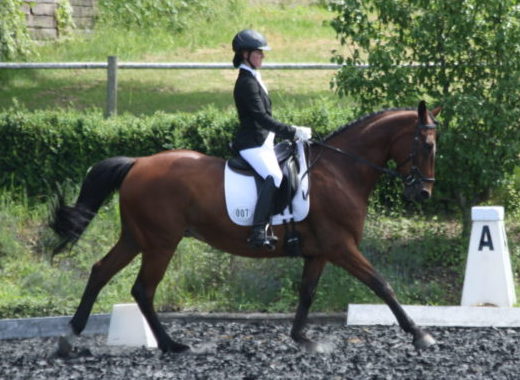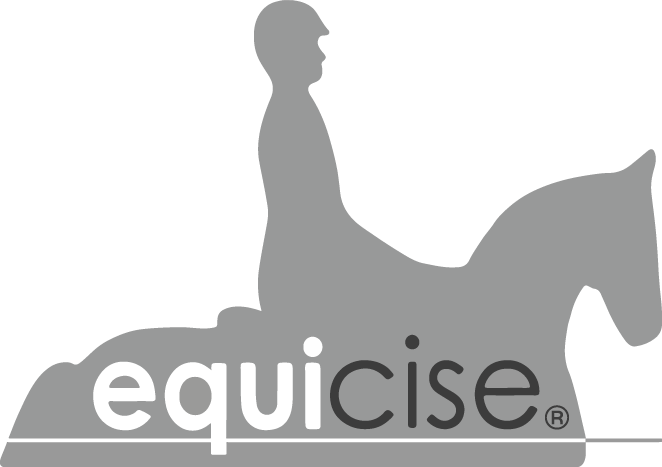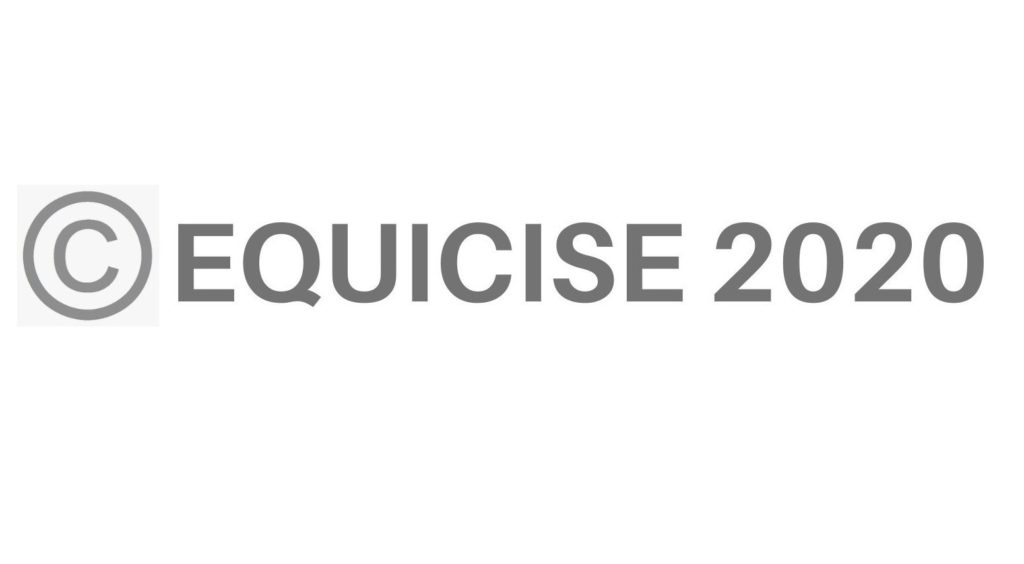09 Jun 12. Improving your seat in canter
 In Article no 10 (Improving your balance) we discussed various exercises that can help to develop a more secure seat, including riding without stirrups and/or reins. One exercise that is particularly useful in canter is lifting your legs away from your horse’s side which, if done correctly, requires you to relax your hip and thigh muscles, helping to unlock your hips. Developing a secure and correct seat in canter may take some time but, once achieved, will be much appreciated by your horse, and one of the best ways to practise is on the EQUICISE which allows you to focus on your own position without having to worry about any reaction from your horse. Riders who struggle with sitting correctly in the saddle at canter are often unable to maintain the pace for very long, making it harder to improve but on the EQUICISE, you can canter for as long as you like without having to worry about keeping your horse going. The EQUICISE moves laterally and vertically, providing the rider with a realistic feel in either working or medium canter. Riding without stirrups is excellent for developing the seat in canter, but can be rather daunting on a real horse if you are not feeling very secure, whereas the EQUICISE is an excellent way to get the practice you need in complete safety.
In Article no 10 (Improving your balance) we discussed various exercises that can help to develop a more secure seat, including riding without stirrups and/or reins. One exercise that is particularly useful in canter is lifting your legs away from your horse’s side which, if done correctly, requires you to relax your hip and thigh muscles, helping to unlock your hips. Developing a secure and correct seat in canter may take some time but, once achieved, will be much appreciated by your horse, and one of the best ways to practise is on the EQUICISE which allows you to focus on your own position without having to worry about any reaction from your horse. Riders who struggle with sitting correctly in the saddle at canter are often unable to maintain the pace for very long, making it harder to improve but on the EQUICISE, you can canter for as long as you like without having to worry about keeping your horse going. The EQUICISE moves laterally and vertically, providing the rider with a realistic feel in either working or medium canter. Riding without stirrups is excellent for developing the seat in canter, but can be rather daunting on a real horse if you are not feeling very secure, whereas the EQUICISE is an excellent way to get the practice you need in complete safety.
Once you have developed the necessary core muscle strength to enable you to retain the correct upper body position while also keeping your hip flexors and abductors loose and relaxed so your hips can swing, you will find it much easier to collect or extend your horse’s canter by using your core muscles – a target well worth working towards. Your EQUICISE instructor can guide you through exercises that you can safely perform on the simulator which will help loosen your hip flexors. Your hands should follow the movement of the horse’s head and neck as it canters and you will be able to check your progress thanks to the rein sensors which measure tension through the reins and provide feedback on the screen in front of you. This information will allow you to monitor your progress and see whether you have managed to achieve a soft, balanced contact. Another excellent exercise, best not performed on a real horse, is riding with your eyes closed. Closing your eyes can do absolute wonders for your feel and balance. Without access to visual cues, you will be obliged to rely on feel alone and being able to practise this safely in canter will really help you to make progress.
Once you have succeeded in strengthening your core, muscle memory will enable you to transfer the achievements you have made during your time on the EQUICISE to riding a real horse.
Book a LESSON on the EQUICISE so you can learn to master the correct canter seat.
PRACTISE THIS ON THE SIMULATOR
Cantering with your legs up (as if you are seated on a chair) helps you to improve your posture by keeping your seat bones correctly positioned in the saddle and increases your confidence. This is a good exercise to help you stop gripping with your legs as well.
To make it a bit more challenging, you can hold your arms up.
PRACTISE THIS ON THE SIMULATOR
Cantering with your legs up (as if you are seated on a chair) helps you to improve your posture by keeping your seat bones correctly positioned in the saddle and increases your confidence. This is a good exercise to help you stop gripping with your legs as well. To make it a bit more challenging, you can hold your arms up.




